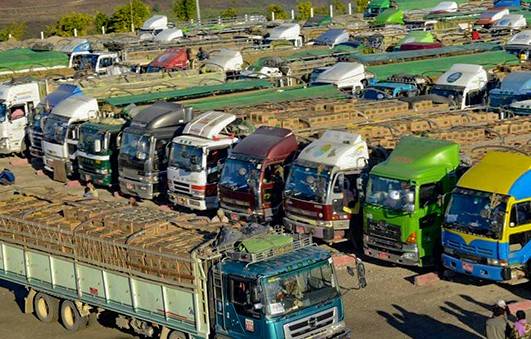Myanmar’s border trade with China has registered a decrease of US$147.27 million between 1 October and 14 August in the current financial year 2019-2020. Data from the Ministry of Commerce show the value of Myanmar-China border trade in all five borders touched over $5.07 billion in the current financial year, which significantly plunged from over $5.2 billion recorded in the year-ago period.This FY, border trade values totalled $4.19 billion through Muse border, $126.29 million via Lwejel, $471 million via Chinshwehaw, $279.25 million via Kampaiti, and over $4.84 million via Kengtung. The Commerce Ministry’s data showed a drop in trade value through all those border areas between Myanmar and China.
The decline in trade is attributed to the trade suspension and trade delay amid the tight security measures of coronavirus. China has been stepping up border control measures to contain the spread of the coronavirus infection.Next, the export of agricultural products is often halted, on account of China clamping down on illegal goods.Myanmar merchants are facing difficulties in exporting goods to China through the legitimate channel as they find the tax levied by China is too high.In a bid to lower trade barriers and offer relief to Myanmar traders through the border trade channel, the Ministry of Commerce, the relevant departments and Union of Myanmar Federation of Chambers of Commerce and Industry have been negotiating with China counterparts.
The two countries are making efforts to set up more border economic cooperation zones and promote border trade. Myanmar’s MOC is trying to boost exports of rice, broken rice, agro-products, fruits and fisheries to China through diplomatic negotiations. After a series of negotiation between Myanmar and China, the General Administration of Customs of the People’s Republic of China (GACC) granted licences to 43 Myanmar companies on 10 July 2020 to export the rice to China through a legitimate trade channel.Myanmar exports rice, sugar, pulses, sesame seeds, corn, dried tea leaves, fishery products, minerals, and animal products to China. At the same time, it imports agricultural machinery, electrical appliances, iron and steel-related materials, raw industrial goods, and consumer goods from the neighboring country.
Source: The Global New Light of Myanmar

